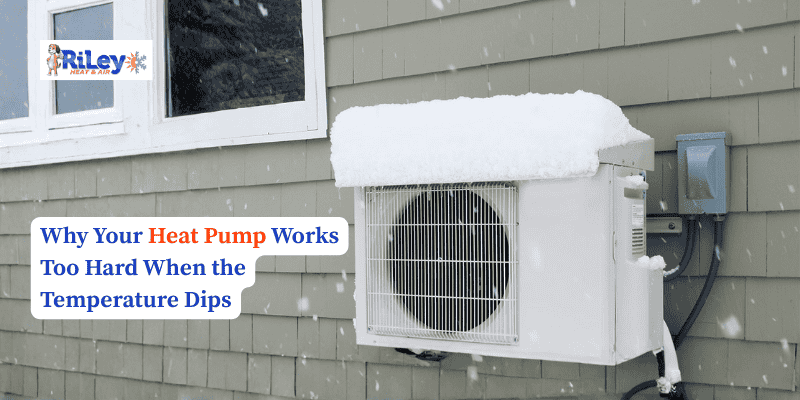
AC Troubleshooting Myths: Why ‘Not Cooling’ Doesn’t Always Mean Low Refrigerant
When the heat is soaring outside and your air conditioner does not appear to be dehumidifying your home as it should, it is easy to think of only one thing: that the refrigerant is low. That is what most homeowners think after all. However, the fact is that not cooling is not necessarily the same as having a low refrigerant level. Making that conclusion may cause you to spend unnecessary money and postpone a good repair.
In this post, we will not only debunk some myths about AC troubleshooting, but we will also explain why the refrigerant may not be the issue. You will also learn about other problems that may be causing your system to choke.
The Myth of Low Refrigerant
Low refrigerant is one of the common AC myths that is often used to explain any cooling issue. Although it may be a cause, the level of refrigerant does not decrease naturally. Refrigerant is never used up in operation like oil in your car. A low system is usually a sign that you have a leakage somewhere that needs to be addressed.
The actual threat arises in cases where homeowners believe they only require a recharge every summer. This is a stopgap measure that does not address the underlying issue, wastes resources, and imposes unwarranted pressure on the system.
Common Reasons Your AC Is Not Cooling
Even though refrigerant plays an essential role in the operation of your AC system, it is not always the cost of not cooling. Here are some of the typical problems that can be used to explain why your AC is not cooling as it should:
1. Dirty Air Filters
Dropped filters or dirty filters block airflow and will cause your system to have a more difficult time circulating cool air. Not only is this inefficient, but it may also result in your evaporator coil freezing, which can mimic the symptoms of a refrigerant leak.
2. Obstructed or Clogged Condenser Coils.
The exterior unit plays a crucial role in dissipating the heat from your house. Dirt, grass, or debris that covers the coils prevents your AC from blowing the heat off, resulting in warm air blowing in.
3. Thermostat Issues
The issue can be as easy as just a thermostat that is programmed to the incorrect temperature or setting. Broken thermostats may also send incorrect signals, preventing your system from functioning properly.
4. Electrical or mechanical malfunctions.
Internal components, such as motors and capacitors, wear out. Failure of any of these stops the cooling process, regardless of the refrigerant levels. For cases of mechanical or electrical malfunctions in Northwest Washington, professional inspection and repair will help address them effectively.
5. Ductwork Problems
Leaky or inadequately insulated ducts can also cause the loss of cool air that could be useful to your rooms before it escapes. That may lead you to think that your AC is not cooling, even though the system is actually functioning properly.
Why Misdiagnosis Costs You
And thinking that the myth of low refrigerant is not only frustrating, but also an expensive affair. Here is why:
- Unnecessary Refills: This is expensive and does not effectively address the issue of leaks by continuously topping off the refrigerant.
- Wasted Energy: Be aware that a system that is not properly maintained will have higher energy consumption, resulting in increased monthly utility bills.
- Shortened Lifespan: Overworking your AC before it is repaired can accelerate wear and tear.
- Bigger Repairs Later: When root causes are not addressed, more severe and more costly breakdowns will occur.
The Role of Professional Diagnosis
Air conditioning is a complex system that comprises many components. This is what makes professional diagnosis important. A trained technician will not merely guess; they will conduct tests, check pressures, inspect components, and verify that the refrigerant level is indeed low or that another issue has occurred.
Qualified HVAC technicians in places like Upper Marlboro can conduct proper diagnostics. With the use of proper tools, they reduce the risk of misdiagnosis and ensure that the appropriate repair is done.
Signs That Truly Point to Low Refrigerant
Although it does not necessarily indicate low refrigerant, some indications lean more in that direction. When you notice any of these signs, take action as soon as possible.
- Hissing or bubbling noises around the unit can indicate a refrigerant leak.
- The accumulation of ice on the evaporator coil or refrigerant lines.
- The AC is running continuously but not reaching the intended temperature.
- Increased electricity rates, even though there was no increase in consumption.
When you notice such symptoms, it becomes prudent to summon a professional to test the refrigerant levels and determine whether there are leaks.
Conclusion
The use of air conditioners is essential for comfort, particularly in hot summer months. However, when something does go bad, presuming that it is constantly low on refrigerant may have you heading in the wrong direction. Starting with dirty filters, thermostat glitches, and ductwork leaks, numerous factors can contribute to poor cooling performance.
It is not important to guess but to diagnose the system correctly. The knowledge of the myths, simple preventative measures, and professional experience can help you keep your AC operating efficiently, increase its lifespan, and save money in the long term. Call Riley Heat & Air today if you need an expert HVAC solution now!






